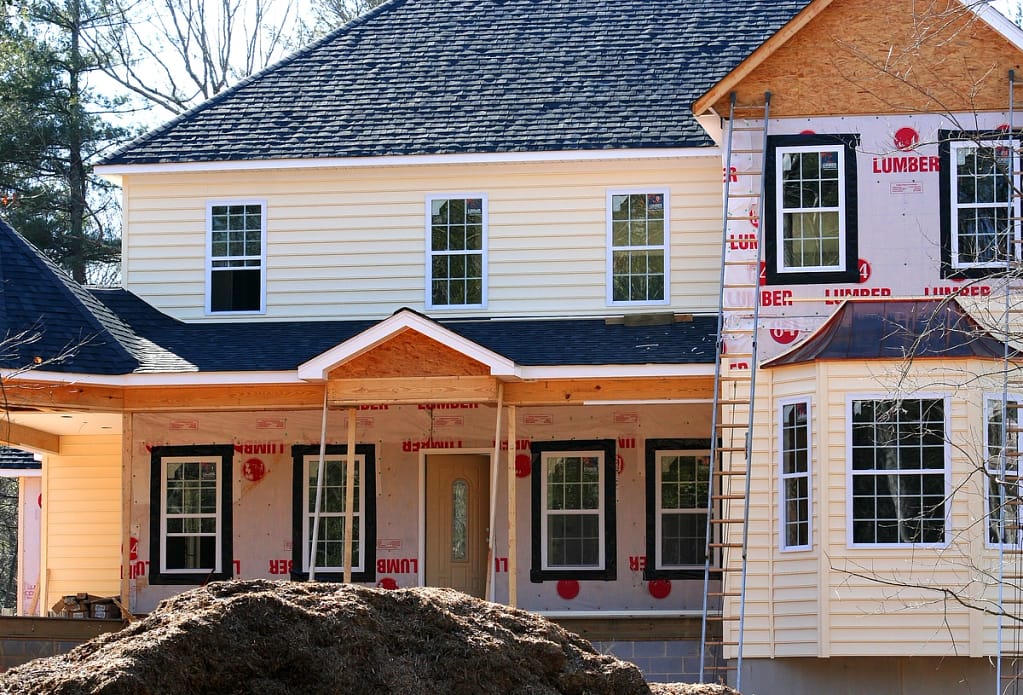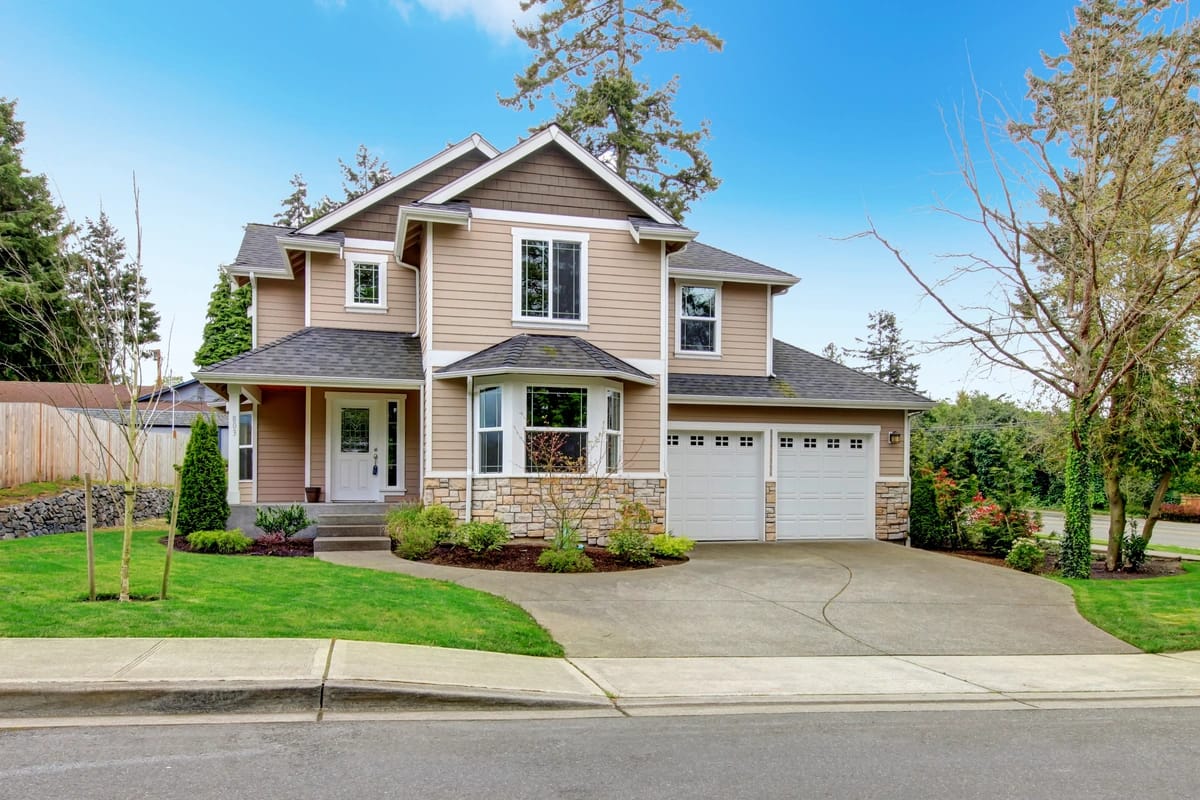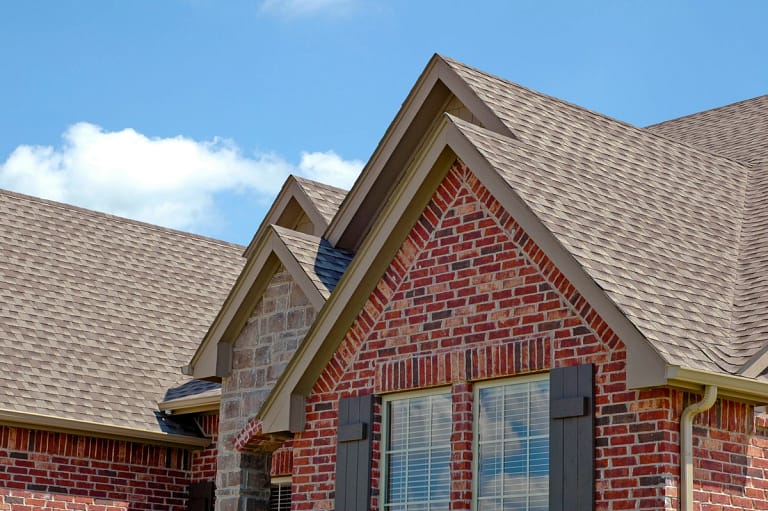Does your home’s exterior need a little TLC? Well, replacement siding might just be the answer. Whether you’re tired of the outdated appearance of your current siding, or it’s worn down, replacement siding can completely transform your property.
But if you have no idea what to expect from the siding replacement process, this detailed guide will cover everything you should know. We’ll discuss:
- The different types of materials
- The benefits of siding
- The installation process
By the end of this article, you’ll have all the information on how to get rid of your old siding and boost your home’s curb appeal. So, on that note, keep reading below!
3 Reasons to Consider Replacement Siding

If your home’s exterior is showing signs of wear and tear, it may be time for replacement siding. There are several reasons why homeowners opt for this upgrade, such as:
1) Improved Appearance
Replacement siding can dramatically improve the overall appearance of your home. With a wide variety of materials and styles, you can select a siding option that complements your home’s architectural style and your personal taste. Whether you prefer a modern look or a traditional aesthetic, you’re sure to find an option that suits your needs.
2) Repair Damage
Installing new siding provides an opportunity to address structural issues and damage to your home’s exterior. If the current siding is rotting, cracking, or water damaged, it can compromise the integrity of your home’s structure. By replacing damaged siding with new, durable materials, you can protect your home from further damage and ensure its longevity.
3) Better Energy Efficiency
Siding installation can enhance your home’s energy efficiency. Older siding materials may lack proper insulation, leading to drafts and higher electricity bills.
But, by investing in replacement siding, you can enhance your home’s insulation and minimize energy loss. This not only helps to keep your home comfortable year-round, but it also reduces the negative impact on the environment.
5 Types of Siding Materials and Brands

When it comes to replacement siding, there is a wide range of materials and brands to choose from. Each material has its pros and cons, so it’s essential to think about your preferences before making a decision. Here’s a look at the options:
1) Vinyl Siding
Vinyl siding is one of the most popular choices among homeowners. It’s affordable, low-maintenance, and available in a variety of colors and textures.
Vinyl siding is also resistant to rot, insects, and fading, making it a durable option for long-term use. Some well-known vinyl siding brands include CertainTeed and James Hardie.
2) Fiber Cement Siding
Fiber cement siding is a blend of wood fibers, sand, and cement. It offers the look of natural wood without the maintenance requirements.
This siding option is resistant to fire, rot, and pests, which makes it a long-lasting option. Some of the popular fiber cement siding brands are James Hardie, Allura, and Nichiha.
3) Wood Siding
Wood siding offers a natural, timeless charm to your home’s exterior. It can be painted or stained in various colors, allowing for customization.
However, wood siding requires regular maintenance, such as sealing and painting, to prevent rot and insect damage. Some of the most commonly used wood siding options are cedar, pine, and redwood.
4) Metal Siding
Metal siding, such as aluminum or steel, gives homes a sleek, contemporary appearance. It is highly durable, fire-resistant, and requires minimal maintenance.
Also, metal siding is available in various styles, so you don’t have to worry about your house siding looking bland. Some of the well-known metal siding brands include Mastic, Ply Gem, and Revere.
5) Engineered Wood Siding
Engineered wood siding combines wood fibers with resin and other materials to create a durable, low-maintenance option. It provides the look of real wood with enhanced durability and resistance to rot and insects. The most well-known engineered wood siding brands include LP SmartSide and Everlast.
What to Consider When Choosing New Siding

To select the right siding materials for your house, there are a few things you should think about first. Here are some key factors to keep in mind:
- 💰Budget: Always think about your budget for replacement siding, and include both material and installation costs. Different siding materials vary in price, so it’s essential to choose one that fits within your budget.
- ☀️Climate: Don’t forget to consider the climate in your area. If you live in a region with extreme temperature fluctuations or frequent severe weather, you may want to choose a siding material that can withstand such conditions.
- 🧰Maintenance: Consider the level of maintenance you are willing to commit to. Some siding materials require regular painting or sealing, while others are virtually maintenance-free.
- 💅Aesthetics: Think about the style of your home’s exterior surface and how the siding material will complement its overall look. Always consider factors such as color, texture, and style options.
- 💪Durability: Assess the durability and lifespan of the siding material. Some materials, like vinyl and fiber cement, are known for their durability and resistance to damage. On the contrary, others may require more frequent repairs or replacements.
- 🧣Insulation: Evaluate the insulation properties of the siding material. As previously stated, insulated siding can improve energy efficiency and reduce heating and cooling costs.
By carefully considering these factors, you can make the proper decision when choosing the best siding for your home.
The Process of Siding Installation
Installing replacement siding is a complex process that requires skill and expertise. While it is possible to DIY, hiring a professional contractor is recommended to ensure that the job is done correctly. Here is a general overview of the installation process:
- Preparation: The existing siding is removed, and the exterior walls are inspected for damage or rot. Necessary repairs are made before the new siding is installed.
- Weather Barrier: A weather-resistant barrier, such as house wrap or building paper, is installed to protect the walls from moisture.
- Flashing and Trim: Flashing is applied around windows, doors, and other openings to prevent water infiltration. Trim pieces are installed to provide a finished look and cover any gaps.
- Siding Installation: The replacement siding is installed according to the manufacturer’s instructions. This involves cutting the siding to the appropriate size, nailing or fastening it to the wall, and overlapping the pieces to create a seamless finish.
- Finishing Touches: Once the siding is installed, the necessary finishing touches, such as caulking and painting, are done to ensure a polished appearance.
It’s vital to hire a reputable company, like Best Exteriors, that specializes in siding installation to ensure the process is done correctly and efficiently.
Common Problems With Replacement Siding
While replacement siding is designed to be durable, issues may still arise over time. Understanding common problems and how to address them can save you from costly repairs or premature replacement.
One common issue is moisture damage, which can lead to mold growth or rotting. Regular inspections and prompt repairs can help prevent these issues.
Another problem is warping or buckling, which is often caused by improper installation or excessive heat exposure. In such cases, consulting a professional is recommended to assess the extent of the damage and determine the best course of action.
Maintaining Replacement Siding

Proper maintenance is essential for prolonging the life and appearance of your new siding. Here are some tips to keep in mind:
- Regular Cleaning: Clean your siding at least once a year using a mild detergent, water, and a soft brush or cloth. Avoid using abrasive cleaners or power washers, as they can damage the siding.
- Inspect for Damage: Regularly inspect your siding for any signs of damage, such as cracks, chips, or loose pieces. Quickly repair or replace damaged sections to prevent further issues.
- Trim Vegetation: Trim any trees, shrubs, or vines that may come into contact with your siding. Overgrown vegetation can cause damage and promote moisture retention.
- Prevent Moisture Buildup: Ensure proper ventilation around your home to prevent moisture buildup behind the siding. This can be achieved through the installation of vents and maintaining proper drainage.
- Painting and Sealing: If you have wood or engineered wood siding, regularly check for peeling paint or signs of wear. Repaint or seal the siding as needed to protect it from moisture and UV damage.
If you follow these maintenance tips, you’ll keep your siding in pristine condition for many years!
The Advantages of House Siding for Home Appeal
Investing in siding installation offers several benefits for enhancing your home’s appeal. Below are some key advantages:
Enhanced Appearance🏡
Replacement siding allows you to update the appearance of your home, giving it a fresh, modern appeal. With a wide range of colors and styles to choose from, you can customize the siding to match your personal taste and enhance your home’s curb appeal.
Increased Home Value💲
Upgrading your home’s exterior with new siding can significantly increase its value. Potential buyers are often attracted to homes with updated and well-maintained siding because it gives the impression of a well-cared-for property.
Enhanced Architectural Features 🔨
The right siding replacement can highlight and upgrade your home’s architectural features. By picking the right siding material and color, you can draw attention to unique details and make your home stand out in the neighborhood.
Long-Lasting Beauty ✨
High-quality replacement siding materials, such as fiber cement or vinyl, are designed to withstand the test of time. They are resistant to fading, cracking, and warping, which ensures that your home looks beautiful for many years.
The Advantages of Replacement Siding for Home Protection

In addition to revamping your home’s appeal, upgraded siding also provides essential protection against the elements. Here are some key benefits of siding installation for home protection:
Weather Resistance ⛈️
High-quality siding materials, such as fiber cement and vinyl, are designed to withstand extreme weather conditions. They are resistant to wind, rain, hail, and UV rays, which protects your home’s exterior from damage.
Moisture Prevention 💧
Properly installed siding acts as a barrier against moisture infiltration. This helps to prevent issues like rotting, molding, and water damage. All of those things can compromise the structural integrity of your home.
Fire Resistance 🔥
Certain replacement siding materials, such as fiber cement and metal, are highly fire-resistant. They can help protect your home from potential fire hazards and provide peace of mind.
By investing in replacement siding, you can ensure your home is well-protected against the elements and enjoy a greater sense of security.
Finding a Reliable Contractor for Siding Replacement
To ensure a successful replacement siding project, it’s crucial to find an experienced contractor. Here are some tips for finding the right siding company:
- Research: Do thorough research and gather recommendations from friends, family, and neighbors who have had replacement siding installed. Look for contractors with positive reviews and a track record of quality work.
- Get Multiple Quotes: Obtain quotes from several contractors to compare pricing and services. Be wary of significantly low bids, as they may indicate subpar workmanship or the use of inferior materials.
- Check Credentials: Verify that the contractor is licensed, bonded, and insured. This protects you from potential liability in case of accidents or damage during the project.
- Ask for References: Request references from previous customers and follow up with them to inquire about their experience with the siding provider. Ask about the quality of work, timeliness, and professionalism.
- Review Paperwork: Carefully review all paperwork before signing. Make sure that it includes detailed information regarding the scope of work, materials to be used, payment schedules, and warranties.
When you find a reputable contractor, you’ll have peace of mind knowing that your replacement siding project will be completed to your satisfaction.
Need New Siding? We Can Help!
We hope this extensive guide helped you learn everything there is to know about replacement siding. And, if you’re on the hunt for a reliable siding contractor, we can help you. At Best Exteriors, we can bring your home to life.
We offer a variety of color and style options, and we’re experts at installing James Hardie fiber cement siding. With a new upgrade, your home with surely grab attention. To inquire more about our services, call 614-423-6147, or contact us on our website to get a free consultation.




